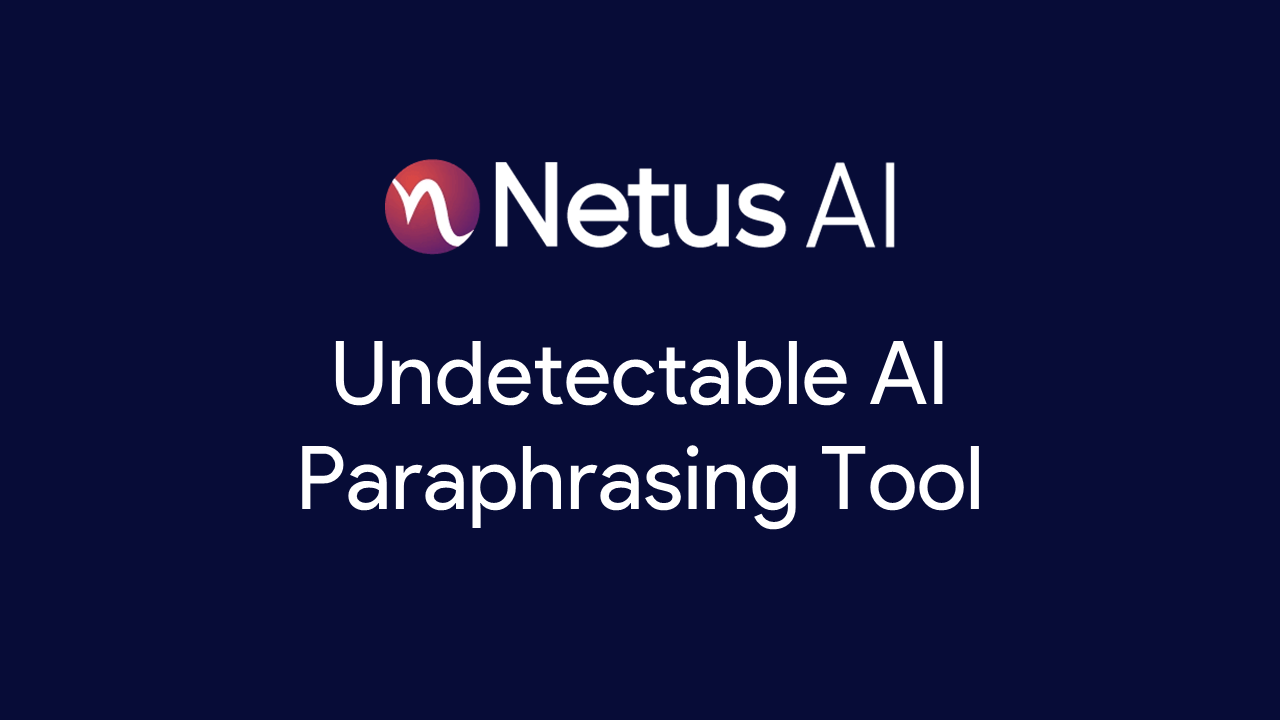NetusAI
NetusAI
Blog Article

Evaluating the Accuracy of GPTZero in Detecting AI-Generated Text
AI-driven paraphrasing tools like NetusAI have revolutionized content creation by enabling writers to produce unique, high-quality content quickly. These tools transform AI-generated text into human-like writing, featuring advanced capabilities such as an AI bypasser to avoid detection and an AI detector to distinguish between human-written and AI-generated content with high accuracy. However, the effectiveness of AI detection systems like GPTZero has become a critical topic of discussion among content creators and educators.
Understanding GPTZero's Detection Mechanism
GPTZero is designed to detect AI-generated text by analyzing two primary metrics: perplexity and burstiness. Perplexity measures the predictability of the text, with AI-generated content typically being more predictable than human-written content. Burstiness, on the other hand, examines the variation in sentence structure, which tends to be more varied in human writing. These metrics are used to differentiate between human and AI-generated text, aiming to provide a reliable tool for educators, writers, and editors.
Analyzing GPTZero Accuracy
The effectiveness of any detection tool is paramount, and gptzero accuracy has been a focal point of recent evaluations. According to the Netus.ai blog, while GPTZero is effective in analyzing longer texts, it sometimes struggles with shorter pieces. This limitation raises questions about its reliability across different types of content. Despite being a valuable tool for longer documents, its tendency to misclassify shorter texts suggests that is zerogpt accurate might not always be affirmative.
Challenges in Detecting AI-Generated Content
One of the main challenges in AI content detection is the variability of text lengths and styles. GPTZero, for instance, excels at detecting AI patterns in longer texts due to more substantial data for analysis. However, shorter texts often lack the necessary complexity and length, making it harder for the tool to accurately assess perplexity and burstiness. This discrepancy underscores the need for continuous improvement in detection algorithms to ensure tools like GPTZero can handle a wide range of content.
Practical Implications for Educators and Content Creators
For educators and content creators, the reliability of detection tools is crucial. The mixed results of GPTZero highlight the importance of understanding its limitations. Educators relying on GPTZero for academic integrity might find it effective for lengthy essays but less so for shorter assignments. Similarly, content creators need to be cautious about the tool's limitations when verifying the originality of shorter articles or blog posts. The question is zero gpt accurate becomes particularly relevant in these contexts.
Comparing GPTZero with Other Detection Tools
When evaluating the accuracy of AI detection tools, comparing different options is essential. GPTZero's mixed performance suggests that exploring alternatives might be beneficial. Tools like Originality.ai, mentioned in the Netus.ai blog, could offer more reliable detection capabilities, especially for shorter texts. By comparing these tools, users can better understand which detection systems provide the most consistent and accurate results across various content lengths and types.
The Role of Advanced Algorithms
Advanced algorithms are at the core of AI detection tools like GPTZero. These algorithms analyze complex patterns and metrics to identify AI-generated content. However, the effectiveness of these algorithms can vary, as evidenced by GPTZero's performance issues with shorter texts. Continuous development and refinement of these algorithms are necessary to enhance their accuracy and reliability. This ongoing improvement is crucial for ensuring that detection tools can keep pace with the evolving sophistication of AI-generated content.
Exploring Alternatives to GPTZero
Given the mixed performance of GPTZero, it is prudent to explore other detection tools that might offer more consistent accuracy. Originality.ai, for instance, is highlighted as a potentially more reliable option in the Netus.ai blog. This tool may provide better performance in detecting AI-generated content across different text lengths. By exploring and comparing multiple detection tools, users can ensure they have the most effective resources for maintaining content originality and academic integrity.
Conclusion
The effectiveness of AI detection tools like GPTZero is a critical consideration for educators and content creators. While GPTZero offers valuable insights into detecting AI-generated text, its mixed accuracy, particularly with shorter pieces, highlights the need for continuous improvement. The question is zerogpt accurate remains complex, with the tool showing both strengths and weaknesses. As AI-generated content continues to evolve, the tools designed to detect it must also advance, ensuring reliable and consistent accuracy across various content types. By understanding these dynamics and exploring alternative detection tools, users can better navigate the challenges of maintaining content authenticity and academic integrity.
Report this page